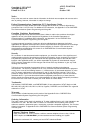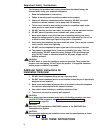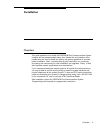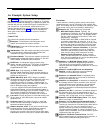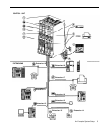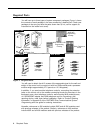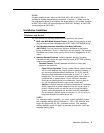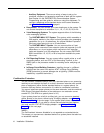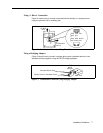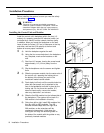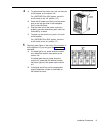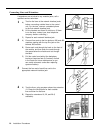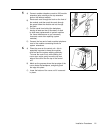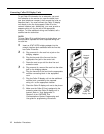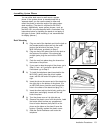
■
■
-
Auxiliary Equipment. There are a variety of ways to set up fax
machines, modems, and answering machines to work with the system.
See Chapter 4 in the PARTNER Plus Communications System
Programming and Use guide for advice on using this equipment. To
connect a telephone and a standard device on the same extension,
see “Combination Extensions” on page 6.
Doorphones. You can connect up to two doorphones to the system. Do
not connect doorphones to extension 10, 11, 16, 17, 22, 23, 28, or 29.
Voice Messaging Systems. The system supports either of the following
voice messaging systems:
-
The PARTNER MAIL VS™ System. This system, which resembles a
206 module, resides in the control unit and provides voice messaging
capabilities for up to 10 subscribers. An optional Mailbox Expansion
Card can extend service for up to 20 subscribers.
-
The PARTNER MAIL™ System. You can connect either a 2-port
system, which connects to two extension jacks and supports up to 20
subscribers, or a 4-port system, which connects to four extension
jacks and supports up to 40 subscribers. Do not connect PARTNER
MAIL to extension 10, 16, 22, or 28 to keep them available for power
failure use.
Call Reporting Devices. You can connect either a serial printer or a call
accounting device, such as AT&T’s Call Accounting Terminal, to the
SMDR jack on the processor module for recording and/or analyzing call
activity.
In-Range Out-of-Building Protectors. Installing phones in a different
■
■
building from the control unit requires AT&T In-Range Out-of-Building
(IROB) protectors, to prevent damage due to lightning. (IROBs must be
installed by a qualified technician.)
Combination Extensions
You can connect a standard device (such as a standard phone or an answering
machine) on an extension by itself, or so that it shares an extension with another
piece of equipment (either another standard device or a system phone). An
extension with two devices connected to it is called a combination extension.
You cannot install two system phones on the same extension, and the combined
REN (Ringer Equivalence Number) of two devices on one extension cannot
exceed 2.0. (The REN for a system phone is 0.0.)
If your system phone has a built-in auxiliary jack, you can connect a standard
device directly to the phone, without using a bridging adapter—see “Using A
Direct Connection” on the next page. If your system phone does not provide a
built-in auxiliary jack or if you want to connect two standard devices together,
you must use an AT&T 267F2 bridging adapter—see “Using a Bridging
Adapter” on the next page.
NOTE:
The Call Assistant Intercom Autodialer is not regarded as a standard device.
This means you can connect a standard device to a system phone that also has
an autodialer installed.
6 Installation Guidelines



